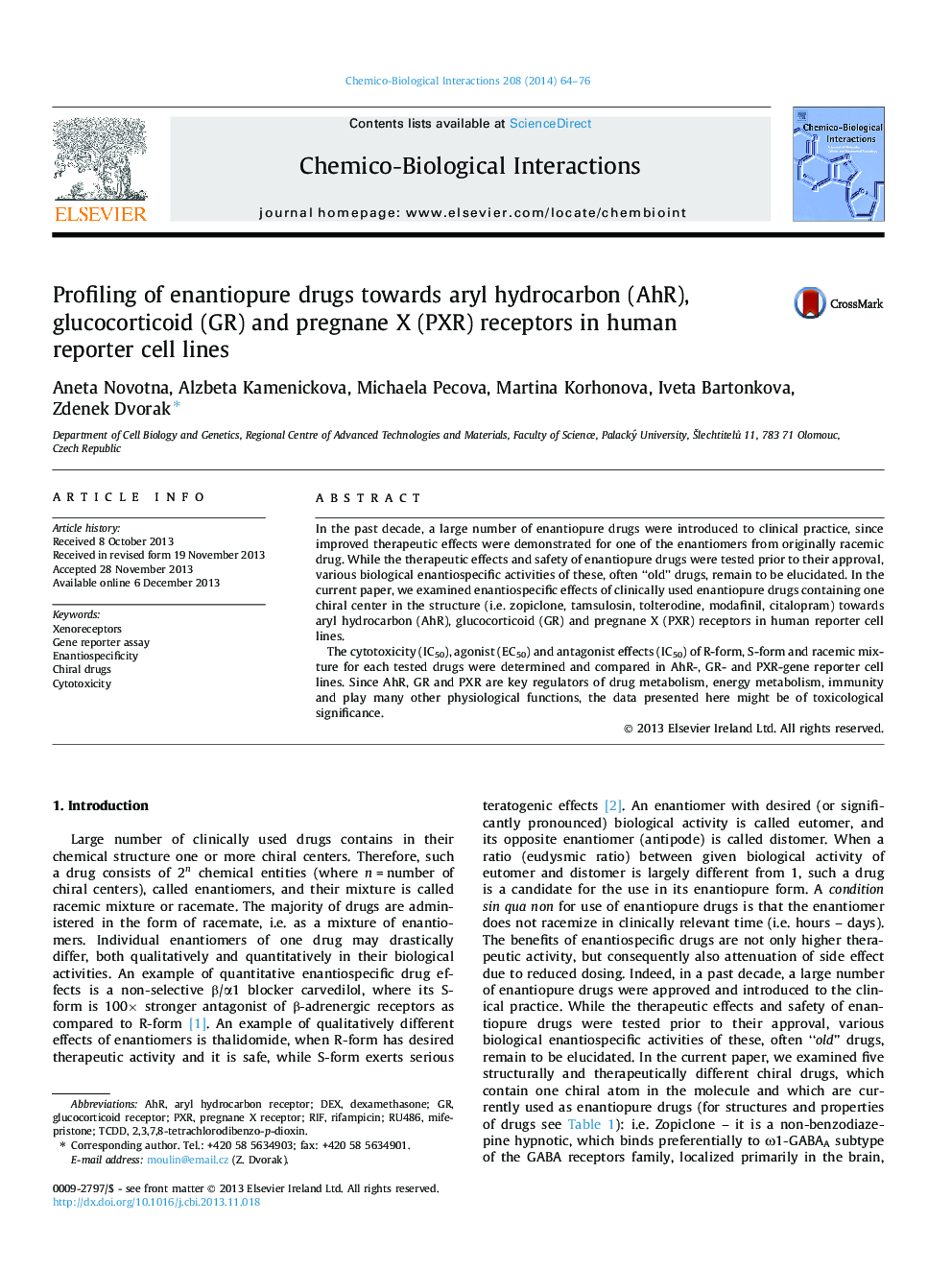| کد مقاله | کد نشریه | سال انتشار | مقاله انگلیسی | نسخه تمام متن |
|---|---|---|---|---|
| 2580550 | 1561633 | 2014 | 13 صفحه PDF | دانلود رایگان |

• We investigated cytotoxicity of enantiopure drugs in cancer cell lines.
• We examined effects of enantiopure drugs on AhR, GR and PXR receptors.
• We measured the effects of enantiopure drugs on expression of CYP3A4.
• Tolterodine, tamsulosin, modafinil, citalopram and zopiclone were tested.
• No significant differences between effects of enantiomers were observed.
In the past decade, a large number of enantiopure drugs were introduced to clinical practice, since improved therapeutic effects were demonstrated for one of the enantiomers from originally racemic drug. While the therapeutic effects and safety of enantiopure drugs were tested prior to their approval, various biological enantiospecific activities of these, often “old” drugs, remain to be elucidated. In the current paper, we examined enantiospecific effects of clinically used enantiopure drugs containing one chiral center in the structure (i.e. zopiclone, tamsulosin, tolterodine, modafinil, citalopram) towards aryl hydrocarbon (AhR), glucocorticoid (GR) and pregnane X (PXR) receptors in human reporter cell lines.The cytotoxicity (IC50), agonist (EC50) and antagonist effects (IC50) of R-form, S-form and racemic mixture for each tested drugs were determined and compared in AhR-, GR- and PXR-gene reporter cell lines. Since AhR, GR and PXR are key regulators of drug metabolism, energy metabolism, immunity and play many other physiological functions, the data presented here might be of toxicological significance.
Journal: Chemico-Biological Interactions - Volume 208, 5 February 2014, Pages 64–76